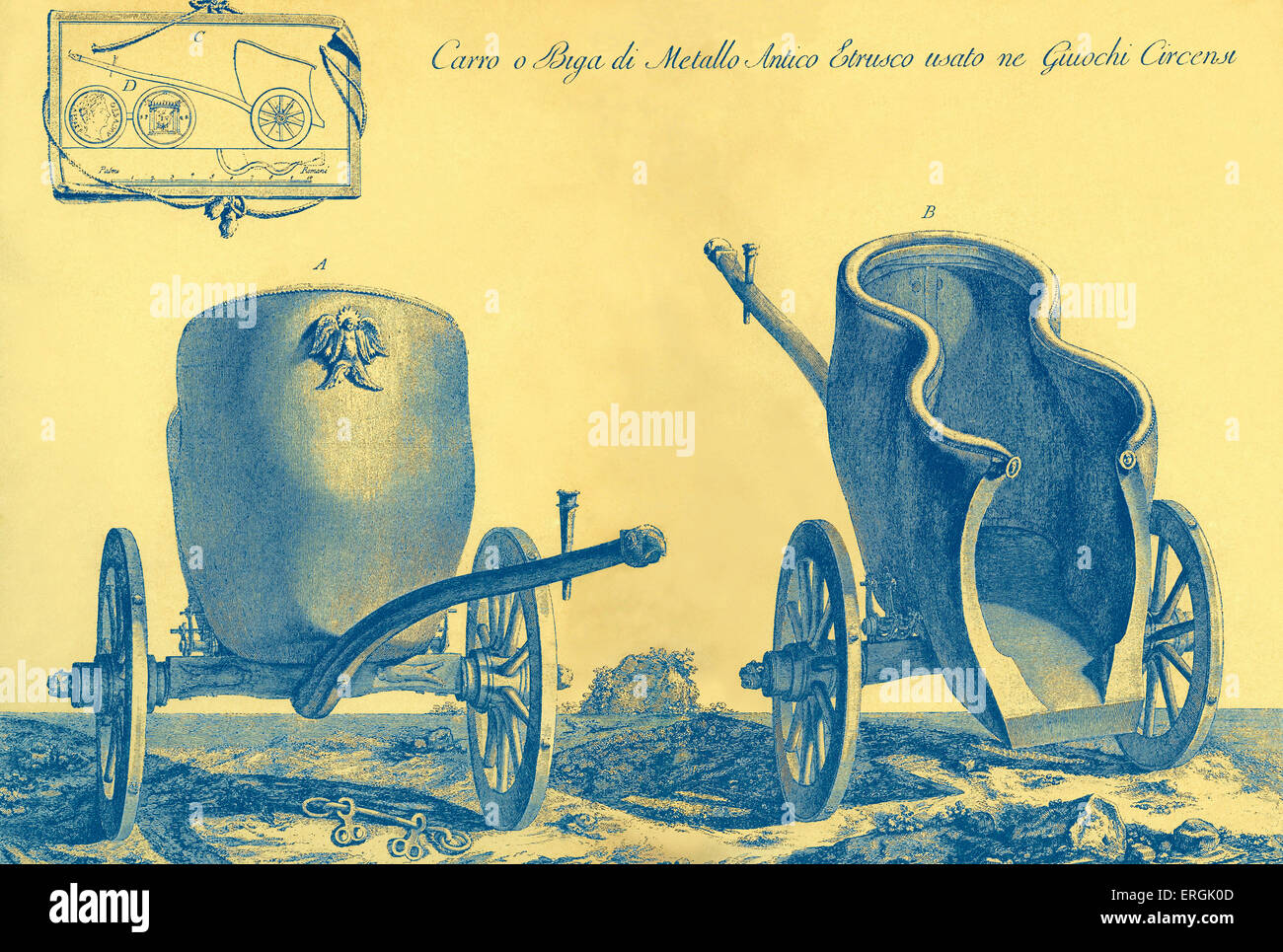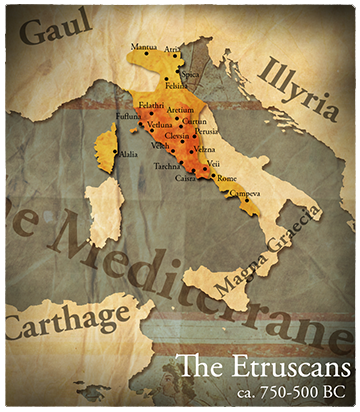
Some corridors and chambers have corbelled roofs such as the 7th-century BCE tomb at Volterra with its domed roof created by ever-decreasing rings of small stone blocks.

A stone corridor leads to a central chamber, which is made to resemble a house with painted windows and door, or in the case of the earliest, with its low ceiling painted to imitate tent fabric and thus the even earlier Etruscan practice of burying the dead in tents. These low walls can have simple moulded decoration.

Alternatively, they are cut from existing rock at the chosen site.

Tumuli are made from a circular tufa block base and lower courses arranged in a circle. Eventually, roof tiles would replace thatch. Beams were protected by nailing terracotta plaques to the exposed ends. Such a tile from Acquarossa came with a disc cover to close the hole in case of rain. Saddle tiles of the same material protected the apex of the roof of rectangular buildings, while examples of a centre tile with a hole in it survive from round structures, made to either admit light or allow smoke to escape. As with larger public buildings, the roofs of houses may have been decorated with terracotta additions such as palmettes, lotus motifs, and figurines. Stone was sometimes used for foundations and lower levels, though. Examples of the 7th-6th-century BCE circular and oval huts at Acquarossa show that the walls there once had a plaster covering.Wooden poles provided additional support and held up a thatch roof. Finally, one area where no texts or reconstructions are needed are the thousands of surviving tombs the Etruscans built, which evolved over the centuries from tumuli to grand stone-vaulted chambers housing multiple generations of the dead.Īlthough Etruscan tombs were seemingly built to last for centuries using stone or rock-cut chambers, everyday domestic architecture was built from more perishable materials: wood, sun-dried mud brick, or waddle and daub for the walls. Roman writers, too, have contributed to our greater knowledge of Etruscan architecture through their admiring descriptions. Other sources of information are required, and fortunately, the Etruscans themselves are able to provide it in their depictions of architecture in tomb paintings and pottery vessels made in the form of buildings from primitive huts to large temples.

In addition, a great number of Etruscan towns were completely covered by later cities in the medieval and modern periods, making any excavations today either problematic or impossible. There is, alas, no Parthenon or Pompeii for this long and influential civilization. Unfortunately, reconstructing the towns and buildings of the Etruscans is made difficult by the absence of any substantial remains.



 0 kommentar(er)
0 kommentar(er)
